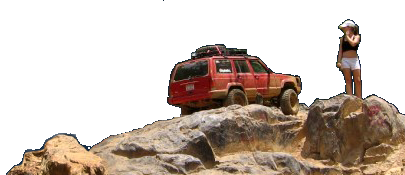peewee
Well-Known Member
- Joined
- Jun 28, 2008
- Location
- Stokesdale
My fist tig weld bead 



I've already dipped it. When you dip it do you grind off the glob and make a new point or do you cut the tungsten and grind a new point?You're going to be hooked now!
Try to keep your stick out somewhere around 3/8" and your tungsten as close to your base material as you can without dipping it too often. When you do dip the tungstun, grind it everytime. before too long you'll learn not to dip it as much.




Looking good Chris!I've been working really hard to get more consistent with my MIG welds on tubing. One of the main things I think helps with it is being able to weld at least 180* around a joint everywhere possible. I think this latest buggy were building is probably my best yet but I've still got a long way to go.




Sent from my iPhone using Tapatalk
I've been working really hard to get more consistent with my MIG welds on tubing. One of the main things I think helps with it is being able to weld at least 180* around a joint everywhere possible. I think this latest buggy were building is probably my best yet but I've still got a long way to go.




Sent from my iPhone using Tapatalk
I've already dipped it. When you dip it do you grind off the glob and make a new point or do you cut the tungsten and grind a new point?





Wait till you try aluminum. Wets in better once you get the hang of it.View attachment 240573
I really like this!
I'll have to get a different welding machine to weld aluminum. Once I get good with the scratch start I'll look in to a more capable welding rig. I've been just burning lines trying to get everything just right. I really like the control of tig.Wait till you try aluminum. Wets in better once you get the hang of it.

We teach both. I like to use push on thinner material. Anything under plate. Thicker I tend to backhand or drag. But here's the catch either way you have to stay on the leading edge of the pool. Also gun angle is important. To much lean and your headed for trouble. Zero to 15 degrees is optimal. Spatter is usually a function of wire stick out or feed rates that don't match the voltage setting. For short circuit transfer use 1/4 stick out. Don't go anywhere near 1/2. 3/8 and your flirting with voltage issues. The volts try to remain constant stick out variations makes this difficult. Wire speed is actually a function of amperage, so tuning for a balanced arc at a higher wire speed always produces more heat. This is a common balance error. Sometimes a little crack can clear up with just a bit higher wire speed, amps go up.Need some advice. I fired up the MIG for the first time in a few years with a new bottle of C25 and 0.030 wire. I have been stick welding for a decent bit and have gotten really comfortable dragging the electrode. Now I know slag=drag and MIG=push but it doesn't feel right after dragging while stick welding. I did a few passes on some clean scrap pushing and was getting a lot of spatter. Maybe my gun angle was too far back and was spraying the arc out of control.
If I can see better and control the gun better dragging is there any issue with that? Here is a picture of my second pass pulling basically maxing out the machine leading to tripping the breaker. The pushing welds looked acceptable, just not as good as when I pulled.
Soooo push or pull?
I'm digging that gage. Not sure what I'd use it for, but seems useful.Now some better stuff.
View attachment 240591
Open root Tig demo I ran. 3/32 filler. 3/8 plate. 3/32 opening. 125 amps flat footed walking cup.
Bridge cam gage. Measure under cut, fill depth, effective throat of fillet welds, reinforcement excetera. Inspection testing for nit picking welds basicly. Makes students and especially seasoned careless pros cuss, a lot.I'm digging that gage. Not sure what I'd use it for, but seems useful.
First with or without a foot pedal or thumb switch?I've got a question for the pros. When striking an ark with scratch start tig what method works best and why. Lots of detail. I've been researching and trying different ways and the one I think I like the best is to put the filler rod against the tungsten and "flick" it down towards the work. I tried to just strike or scratch and ark but it seams to eat the point off of my tungsten and sticks sometimes. What do you do and why? Is their any problems with the way I'm doing it?
First with or without a foot pedal or thumb switch?
Some people confuse lift arc and scratch though the techniques blur between the two.







I've been working really hard to get more consistent with my MIG welds on tubing. One of the main things I think helps with it is being able to weld at least 180* around a joint everywhere possible. I think this latest buggy were building is probably my best yet but I've still got a long way to go.




Sent from my iPhone using Tapatalk

